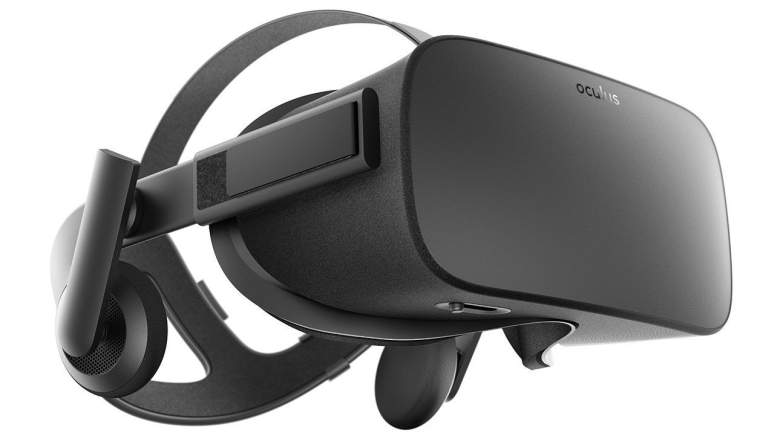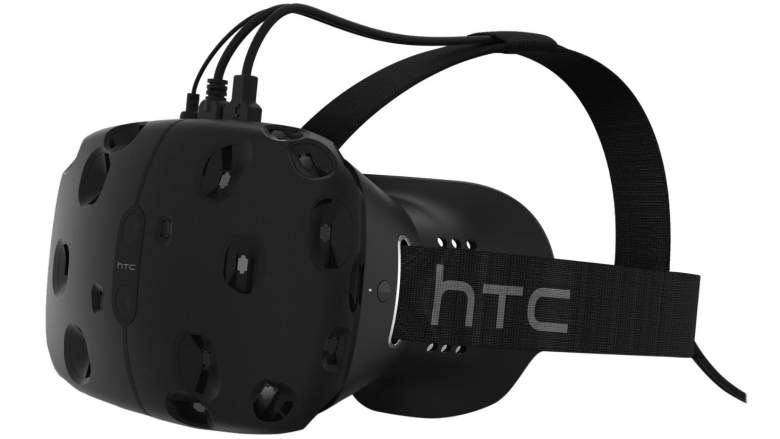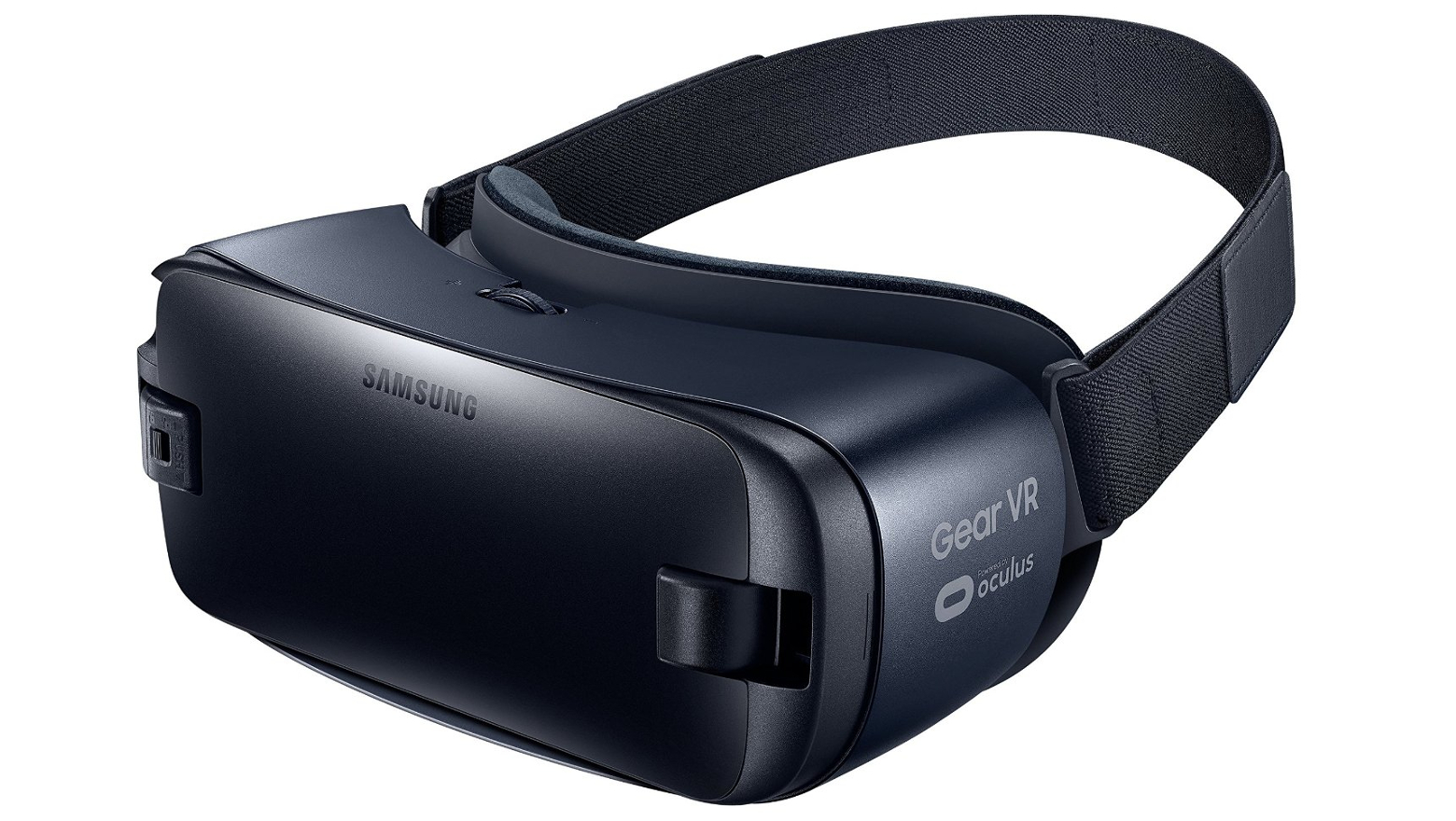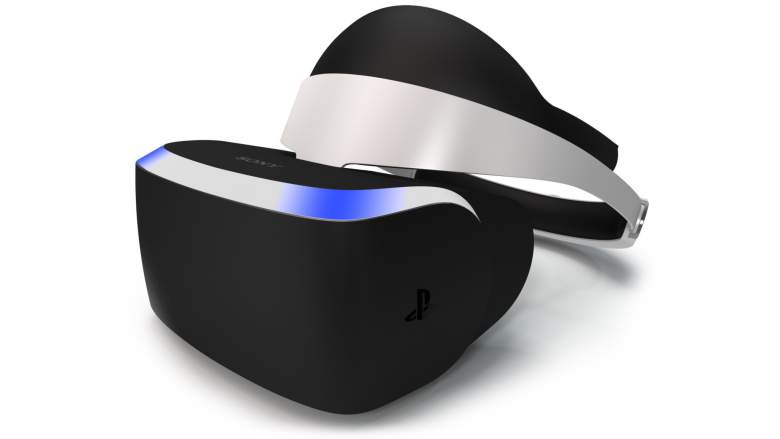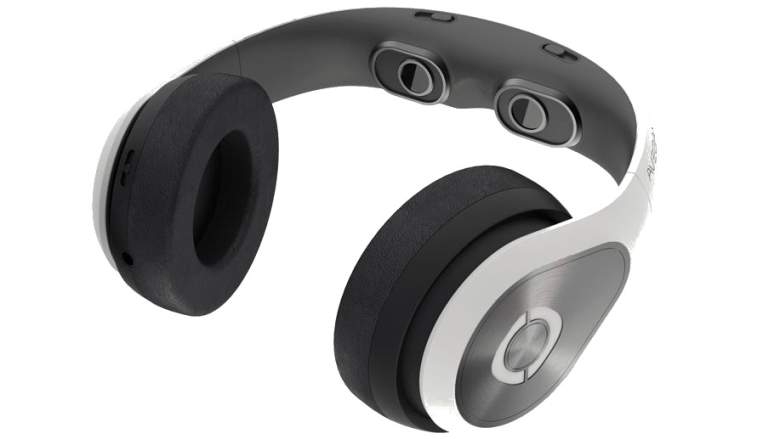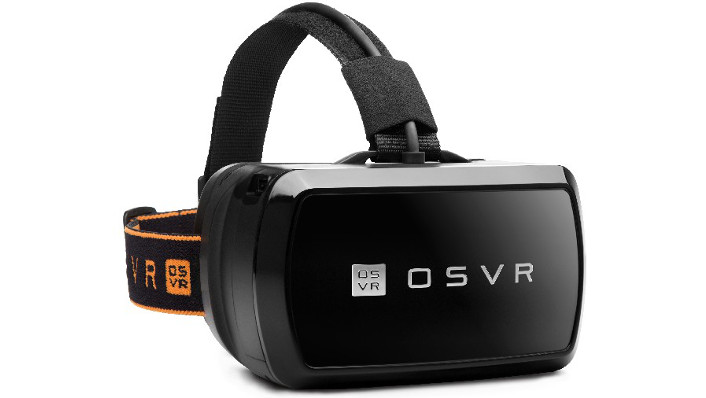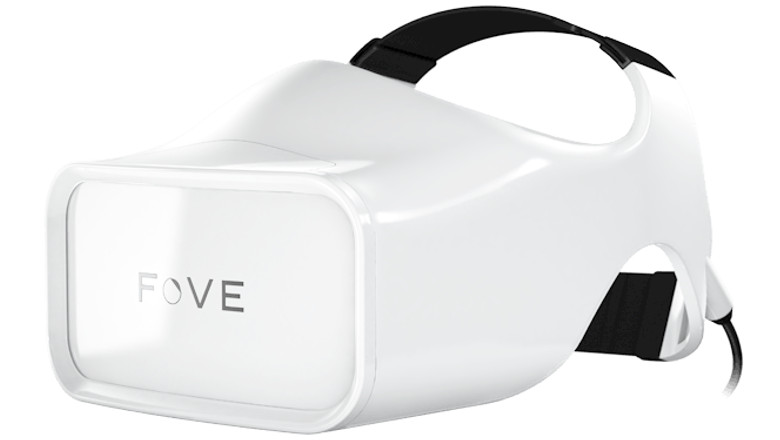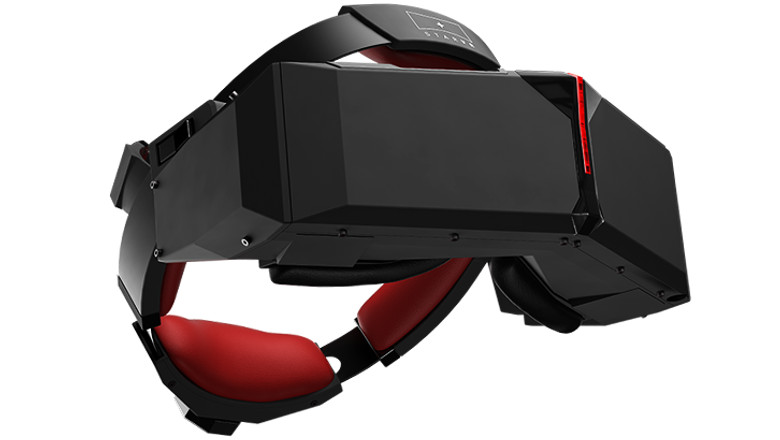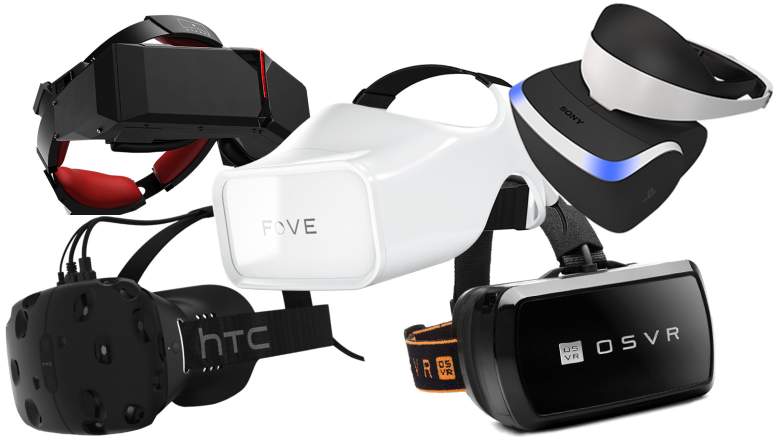
Virtual reality has been seen as nothing more than a promising gimmick for the majority of the last 20 years.
However, the last couple years have seen VR advance by leaps and bounds, to the point where consumer-ready head mounted displays are available now.
Alongside these standalone units, mobile VR has also made great strides, and Google Cardboard kits like these ones can offer a fairly complete VR experience using your smartphone as the graphical processor.
In any form, VR promises to improve many fields outside of gaming technology, including medicine, education, and engineering. With each emerging developer approaching this tech with a new perspective, there is no doubt that virtual reality will become a major part of our everyday lives.
Though these ten headsets’ availability vary from out now to pre-order forthcoming, they have proven through tech demos and press releases alike that they are indeed the HMDs you’ll want to watch out for. From big hitters like Oculus Rift, to VR with a cause like Razer OSVR, the best of the best are about to go even bigger.
1. Oculus Rift
Oculus and their influential Rift headset have been synonymous with this decade’s VR boom since the project’s conception in 2012. They are one of the biggest names in VR, and now one of the first to be delivered to consumers.
The Rift ships with a headset, motion sensor, remote, and the necessary HDMI and USB cables. First Gen kits also include a wireless Xbox One controller and a copy of Lucky’s Tale for out-of-the-box gaming. The controller is upgradable to the Oculus Touch, which hasn’t yet seen its debut, but promises to offer additional gaming potential.
The experience of the Rift goes beyond words, as the motion sensor provides a fluidity of movement that truly rivals reality. The headset weighs just over a pound, and fits snugly on most head sizes. The headset has full positional tracking and a gyrometer, which allows you to perform nuanced actions like looking around a corner.
Visually speaking, the Rift sets the benchmark with its specs. This headset offers a stunning resolution of 1080×1200 in both of its OLED screens (2160×1200 total), and its FOV (field of view) of 110° is substantial, The headset completes the experienced with a microphone and integrated headphones that provide spatialized HRTF audio.
The Oculus Home software aims to become your figurative VR home, recreating a cozy apartment that serves as a menu for navigating between 360° videos, games, and other media. Oculus just recently opened up their library of games to 3rd party headset owners, which is a trend they hopefully stick with, as their game library has already seen significant growth.
As a fairly solid first gen device, the Rift’s only major flaw is its fairly high price tag of $600. The Rift also has some serious system requirements, including a graphics card equivalent to a Nvidia GTX 970 or an AMD R9 290, but this is easy enough for a serious gamer to meet.
Oculus Rift Release Date: Out Now
Price: $599.00
Buy the Oculus Rift here.
Pros:
- 2160×1200 resolution and 110° FOV
- Positional tracking for enhanced movement
- Offers a massive game library
Cons:
- Extra degrees of motion can cause motion sickness
- Oculus Touch controllers not yet released
- Requires a PC with a high-end GPU
Find more Oculus Rift information here.
2. HTC Vive
As expected, Valve and HTC’s Vive headset delivers a high quality VR experience that is a standout option for gaming. Unlike the Rift, the Vive boasts some serious gaming capabilities right out of the box, thanks to its included motion controllers.
The Vive’s ski pole-like controllers are equipped with their own IR LED trackers, alongside a developed control scheme. This includes triggers for gaming, two track pads that act like a fusion of a mouse and control stick, and even a grip that can detect squeezes.
These are all easily learned across the hundreds of different titles already on the SteamVR library. So far, SteamVR proves to be a robust client that is already seeing major third party support. No huge games have been released yet, but many have been teased at by developers like Bethesda (Fallout 4), Croteam (Serious Sam), and of course, Valve.
In addition to the awesome controllers, this unit also ships with two tracking cameras to support Roomscale VR. If you have adequate open space to explore after positioning your two laser trackers, your PC, and cables going to each of these, you can the Vive can map your environment and use it to project new locales, potentially using your furniture as obstacles. This has great potential to eventually be used as a coop feature as well.
Under the hood, the HTC Vive sports a solid 1200×1080 resolution per each eye (2400×1080 total), which comes out to a FOV of about 110°. This combined with the strong support for tracking makes for maximum immersion. While this first-gen product does include a microphone, you must use provide your own headphones for spatialized audio to the experience.
With a higher price tag ($200 more than the Rift) and more extreme computer graphics requirements, the Vive can be a stretch for your casual gamers, but the potential for this device is huge and already being thoroughly explored. Keep this headset on your radar.
HTC Vive Release Date: Out Now
Price: $799.00
Buy the HTC Vive here.
Pros:
- 2400×1080 resolution and 110° FOV
- Room-scale positional tracking for enhanced movement
- SteamVR promises to be a major game platform
Cons:
- High price tag
- Two positional trackers require a large space
- Requires a PC with a high-end GPU
Find more HTC Vive information here.
3. Samsung Gear VR
PC-powered systems make up a bulk of the discussion of VR hardware, but the Samsung Gear VR manages to deliver an immersive VR experience using only a Samsung smartphone. The Gear VR is a collaboration between Oculus and Samsung, but unlike Oculus’ flaship rift, this device doesn’t need a high-end PC graphics card.
Instead, it uses the graphical processing power of a smartphone, something you are far more likely to own than a high-end gaming PC. But in the same way that only the best PCs will meet the benchmark of virtual gaming, your phone options are equally limited.
Currently, the Gear VR supports the Samsung Galaxy Note7, Galaxy S7, Galaxy S7 edge, Galaxy Note5, Galaxy S6 edge+, Galaxy S6 and Galaxy S6 edge. All of these phones have at least a 2560×1440 Super AMOLED screens and high-powered processors. This ensures that you will have nothing short of an incredible experience when hooking into the Gear VR.
Now that the Gear VR has been updated with a 2016 version that supports the new Galaxy Note7, this headset has a modular USB connector that comes with both a USB-C and a Micro USB adapter. This new model now has an auxiliary USB-C port to keep your device charged while you play as well.
Wearability has improved greatly, as the headset feels lightweight and free of pressure spots even when using this headset with one of the larger Note phones. The headset has plenty of cushioning, and it is made up of a breathable material that prevents your lenses from fogging up.
Also new to the 2016 model of the Gear VR is an improved smooth touch pad, which works great for navigating through menus. This version now has a handy home button in addition to a back button and volume rocker.
The controls work great, but when it comes to game content, you will likely need to spring for a Bluetooth gamepad for Android phones, since many games are designed for you to have one. You will find a large selection of games that don’t need gamepads either, as Samsung’s content library is always growing.
Currently, there are head tracking games, 360° videos, gamepad games, tech demos, and more available through the free Oculus App, even though most high-rating apps will cost you a couple bucks more than usual.
The games look great powered by the Galaxy phones’ high resolution, and even though the Gear VR’s FOV is a bit smaller than the Rift’s at 101°, the display still feels highly immersive. Just keep in mind that the Gear VR does not yet employ positional tracking though, so there are some unique differences in the feel of using one of these headsets versus using a full-on VR system.
Shortcomings aside, the Gear VR is one of the best values in virtual reality, and offers an accessible peak at the fantastic technology to come.
Samsung Gear VR Release Date: Out Now
Price: $99.99
Buy the Samsung Gear VR here.
Pros:
- 2560×1440 resolution and 101° FOV
- Onboard controls for easy menu navigation
- Does not require a PC with a high-end GPU
Cons:
- Only works with Samsung Galaxy S6 or later
- Lacks positional tracking
- Does not include a game pad
Find more Samsung Gear VR information and reviews here.
4. Playstation VR
While the VR experience delivered by the Oculus Rift and the Vive is everything it promised, the cost barrier of having a VR-ready PC has greatly dampened the momentum of these products. Now that the Playstation VR is finally out, this relatively inexpensive peripheral may finally find its niche in gaming by connecting to the hardware of the PlayStation 4 (or Playstation 4 Pro) to deliver 360° graphics.
Admittedly, even the PS4 Pro won’t be able to compete in visual quality with high-end PCs, but because Sony isn’t trying to deliver the most cutting edge visual experience, the whole headset is comparably cheaper and more accessible to your average gamer.
The price of the headset is $399, but you will want to spring an extra $100 for the bundle if you don’t already have two Move controller and a PlayStation Camera, both of which are necessary for the full VR experience.
What visual compromises are we talking about? Its 1080P OLED 5.7 inch single screen display is 3D stereoscopic and sports a modest resolution of 960×1080 per eye for 1920×1080 total. That is a lower resolution than that of the Oculus, and has a slightly smaller FOV of 100°.
The redeeming quality of its visual output is that it has a high refresh rate of 120 Hz and a latency of less than 18 ms, making for one of the most fluid VR experiences out there. Keep in mind that this is made possible by an external processor unit, which ships with the headset and relieves your PS4 or PS4 Pro of some of the graphical processing burden.
Granted, this makes for a cleaner setup than either the Rift and the Vive, but it does show that the PS4 might not be the best platform for a cutting edge VR experience.
The headset still provides an excellent user experience though. It is incredibly comfortable, and rests snugly on the crown of your head despite being the heaviest of the available headsets. The visor and lenses are easy to reposition for those who wear glasses, and can be worn for a long while with no discomfort (aside from motion sickness if you are prone to it).
The headset combines it impressive ergonomics with a sleek design as well. Its stunning blue LED setup looks nice and also serves as head tracking points for the PlayStation Camera to read. The tracking is snappy and lends well to immersion in games, but has a pretty limited play space.
Leaving this smaller play space can cause your headset or controllers to cease tracking, which can lead to motion sickness if you try to walk around while playing. If you play standing still, however, it doesn’t distract from gameplay, and things are a lot smoother.
The headset offers 3D audio on all its software, but you will need to plug your own headphones in via an aux jack. A neat plus is that the cable connecting the headset has inline controls for volume, plus mic mute and power buttons.
As for controller integration, players have the option to use either a DualShock 4 controller, or a wand-styled Playstation Move controller. Many games work with both, but some are specially designed for the Move, and really need one to shine.
The Playstation Camera tracks both controllers very accurately, but so far, the Move controllers are the clunkiest controllers of the three major VR headsets to be released. They aren’t always perfectly tracked, and their buttons are too small and hard to find. Improvements in software will gradually alleviate this, but it’s yet to be established which controller options developers will prefer.
Despite its shortcomings, the Playstation VR delivers much of what VR gaming promises at a reasonable price. For those who already have a PS4, this is by far the easiest way to get involved in VR, and the console-powered headset will no doubt see lots of exclusive content from Playstation’s top game developers. Whether it will change console gaming for good is yet to be determined, but the Playstation VR is certainly going to make a splash this year.
Playstation VR Release Date: Out Now
Price: $399.00
Buy the PlayStation VR here.
Pros:
- 120 Hz refresh rate and <18ms latency
- Ergonomic and stylish design
- Will easily enable local or online multiplayer
Cons:
- PlayStation Camera and Move controllers not included
- PS4 hardware limits resolution and FOV
- Awkward button placement on Move controllers
Find more PlayStation VR information here.
5. Avegant Glyph
Avegant’s remarkably ambitious Glyph has a lot of things going for it, and among its most intriguing features is full portability. However, these merits must be balanced with the fact that the Glyph is not technically a VR headset. Instead, they call it “mediawear,” and its purpose is to immerse you in your media visually and aurally.
The Glyph is light, comfortable, and only slightly bigger than a pair of over-ear headphones. It can play video on battery power for up to 4 hours, or play passive audio indefinitely. It even charges via MicroUSB. And to top it all off, it connects via any HDMI-compatible device, so you aren’t tied down to one particular platform for content.
All electronic components are internalized, and connecting to a device is as simple as plugging in an HDMI. This simplified approach makes for near universal application, as the Glyph can be plugged into a PC or console for gaming, a phone or tablet for streaming content. And as this is one of the few HMDs in production that is not specifically designed with gaming in mind, the Glyph is branding its type of design as “mediawear.”
The device does have head tracking and supports an optional headstrap for high-action gaming, but otherwise can be slid over the eyes to display 2D or 3D video content. When the screen is not being used, the Glyph can double as high fidelity headphones with a frequency response of 20 – 20000 Hz, plus active and passive noise canceling.
The Glyph is most ambitious in its display, which instead of using a screen like other VR headsets, utilizes their “virtual retinal display,” which actually uses the retinas of your eyes as a screen. The Glyph 2 million DLP mirrors to project images directly into both eyes, using your brain as the image processor. This makes for an image that is free of pixelation from corner to corner, and the image projected by the Glyph mirrors natural light so viewing it is less stressful on your eyes.
The Glyph’s resolution of 1280×720 per eye (2560×720 total) and FOV of 45° will seem somewhat lower compared to other headsets, but the high fill factor of the micro-mirror array makes the resolution look much sharper than other headsets.
This sharpness comes at the cost of a lower FOV, which is not an issue for anyone planning to view non-VR content on the Glyph, but does mean that the Glyph can’t deliver the same experience as the Oculus Rift.
To put it simply, the Glyph is intended to be more of a high quality HMD than a VR headset. However, it does employ the same technology, and has promise to grow into something more VR-centric with future version.
Since the Glyph costs almost the same as the Oculus Rift and only provides a fraction of the functionality, its fate is uncertain, but this product has strong appeal for those who want to use VR for something outside of gaming. The Glyph Founder’s Edition is a VR device for those that are unsure of how they will use VR, and Avegant promises to provide a flexible platform that will create new opportunities to use the tech.
Avegant Glyph Release Date: Out Now
Price: $699.00
Buy the Avegant Glyph here.
Pros:
- Virtual retinal display offers sharp, realistic picture
- Portable form factor and battery powered
- Streamlined graphics work with any HDMI device-compatible device
Cons:
- High price tag
- 45° FOV does not offer full VR experience
- 4 hour battery life needs improvement
Find more Avegant Glyph information here.
6. Razer OSVR
Razer OSVR has a special place in my heart, as it is the only product that approaches VR from an open source perspective. OSVR (Open Source Virtual Reality) is a unique undertaking compared to other forthcoming VR headsets in that it is more for developers than consumers. There are no confirmed plans from Razer to produce consumer models, but this is still a possibility.
This is the type of headset that Razer would want to put in the hands of as many people as possible, as it runs on a modular software platform that can be customized by anybody.
It can use any game platform, any proprietary VR software, and any controller, making it a highly adaptable tool for someone trying to create new applications. Even Razer’s hardware is fair game, and they provide schematics and drawings that can help you build your own at home.
Its low-latency 5.5 inch OLED Display offers 2160×1200 FHD resolution with 90 fps offers an impressive and immersive picture. But most impressive is that this screen is interchangeable with other types of screens, again opening a huge number of possibilities with developers. It has about 100° FOV, but this too can change by swapping out the lenses.
Considering that OSVR has potential as a functional and affordable headset, it is a big disappointment to hear the lack of plans for a consumer release. But don’t forget that you can literally build your own, which would be no simple task, but opens a lot of possibilities. The OSVR can also be run on substantially less expensive hardware than its PC-based competitors.
Because of this, any hardware developer can use the OSVR as a building block for technology with even greater applications, perhaps training surgeons, creating new forms of therapy, or even a system for controlling security cameras.
Progress is slow though, as one year since I first discovered this project, they have only released two new prototype models.
Certain aspects of this HMD are still rough around the edges, but the potential for growth is limitless. A kit to add positional tracking is now included with shipped developer kits, and there may be more in the future for augmented reality functions, mobile support, and more.
Razer OSVR Release Date: TBA
Razer OSVR Price: TBA
OSVR Hacker Dev Kit v2 Price: $349.99 (13 percent off MSRP)
Buy the OSVR HKD2 here.
Pros:
- Open source software and hardware
- Supports any peripheral or API
- Can be run with mid-tier graphics equipment
Cons:
- Consumer product not in the works
- Diopter adjustment needs work
- Not likely to ship with its own peripherals (besides positional tracking kit)
Find more Razer OSVR information here.
7. Zeiss VR One Plus
Precision lenscrafters Zeiss have now entered the VR arena as well, offering an alternative mobile-based HMD to compete with Samsung’s Gear VR. While its feature set is somewhat lighter than that of the Gear VR, its low price tag may give it just enough traction to become the definitive entry point into virtual reality.
In an excellent move, Zeiss has made mobile VR accessible to those with any smartphone powerful enough to run the software. They do so by using a tray system to fit different phones into the headset. You can buy one included with either an iPhone 6, Galaxy S5, or Galaxy S6 phone tray, or you can 3D print your own for any other type of smartphone with a screen size between 4.7 and 5.2 inches.
Picture resolution is completely dependent on which phone you use with the VR One (as is processing, audio, and tracking), but the Zeiss precision lenses offer a FOV of about 100°. The lenses are top quality, and do not give any blurry, headache-inducing visuals. Several ventilation openings prevent the lens from fogging, ensuring you have the best picture available.
The headset is sleek and reasonably sized, but you will most likely need the overhead strap to get a good fit. Aside from the two touch-sensitive side surfaces, there are no buttons on the device. This works well enough, but can be confusing for those who are new to VR.
The Zeiss VR One can play any apps that have been developed for Unity3D SDK, an open source platform that already has loads of content available. Zeiss also offers a couple proprietary apps, including the VR One Media Center app, which allows you to launch other downloaded VR apps without removing the headset. There is much potential for growth on the software end, as the VR One even has a see-through front shield, which allows the use of smartphone cameras for augmented reality apps.
All in all, the VR One does everything you would want it to, especially considering the incredibly low price. However, there is no telling if this and other smartphone-based VR headsets will continue to evolve at the same speed as standalone HMDs, or even PC-based VR.
At the same time, there is a chance that smartphones will continue to be a great way to deliver VR content. It is clearly too early to be calling shots like that, but if your interest is getting into VR as soon and inexpensively as possible, the Zeiss VR One is a great pick.
Price: $129.00
Buy the Zeiss VR One Plus here.
Pros:
- Supports any smartphone with screens between 4.7 – 5.2 inches (no PC needed)
- Highly affordable price
- Strong app support
Cons:
- Requires separate smartphone tray
- Minimal built-in controls
- Mobile-based VR headsets might not have the same longevity
Find more Zeiss VR One Plus information here.
8. Visus VR
Ambitions run high with Visus, who aims to blow both mobile-based and PC-based VR headsets out of the water by — yes, that’s right — using them both to create one ultra-affordable gaming HMD. Visus has seen some delays in manufacture, resulting in disappointment from pre-order holders. But now that they are back on track after falling almost a year behind schedule, Visus is ready to prove it was worth the wait.
The basic idea of Visus VR is to use your already owned iOS or Android smartphone as a wireless display, and leave the heavy image processing to your PC’s high-end Nvidia GTX graphics card. Though it has garnered much skepticism, Visus’ wireless display is ready to go, and has some really impressive specs. The headset will support most smartphones, and as such, resolution will vary from one model to another.
Since most smartphone screens have at least HD screens, Visus instead focuses on delivering the lowest latency in transmitting video data from PC to smartphone, and head tracking data from the HMD to to your PC.
HD (1280×720) video is delivered in about a 110° FOV (depending on the phone model) at a latency of roughly 70ms, a fairly impressive number for wireless data transmission. Visus’ advertised 30ms ultra-low latency can only be achieved with standard graphical output, which won’t be as pretty, but will be highly functional.
Either way, both output modes have a latency well below the 100ms mark at which motion sickness starts to set in because of visible lag, so the Visus VR will perform 60 Hz V-synced tracking about as well as headsets triple its price. Though this does mean that content will be more or less capped at HD quality, this is also the case for any headset, as HDMI cannot provide the proper fps for immersive UHD or 4K VR.
Another incredible feature of the Visus VR is its Tridef 3D software, which eliminates the need for specially-made VR content. The software can be purchased with the headset at a bundle price of $29, or from the Tridef website for $39, though we would have preferred the software to be included for free.
Tridef works by taking over a game’s player camera and rendering it in stereoscopic 3D, creating immersive 3D content from 2D titles. Its dedicated head tracking also transmits data from HMD to PC game via mouse emulation, which means that tracking controls will work universally any game that uses mouse input.
Visus’ VR will also have several other features to round out the experience, including a 3.5mm headphone jack to connect any pair of headphones, anti-fog air channels to prevent lens fogging, and even a 2000 mAh built-in battery pack to keep your phone charged up to an extra 4 hours while using it as your wireless display. In spite of all these promising features, Visus still has not shipped out any units, so the eager public will have to just wait and see.
Some have predicted that the fact that it takes any phone may cause geometric distortion and chromatic aberration, while it also stands to reason that adjustable lenses can correct this with ease. With no tech demos, and little presence at electronics conventions, we will just keep our eyes peeled for a YouTube review.
Visus VR Release Date: Out Now
Price: $149.00
Order the Visus VR Headset here.
Pros:
- Highly affordable price
- Supports any smartphones with screens between 4.7 – 6 inches
- Tridef 3D software can render any 2D game in stereoscopic 3D
Cons:
- Requires both a smartphone and a Nvidia GTX or GTXm 600+ graphics card
- Only supports up to HD content at the moment
- Tridef software is a $29 separate purchase
Find more Visus VR Headset information here.
9. FOVE VR
Emerging from a highly successful Kickstarter with almost double their goal, FOVE is a new contender in the VR arena that offers 120 fps IR eye tracking as the “next generation” of VR controls. Eye tracking opens up a new world of possibilities in both gaming and non-gaming applications, based around both how the eye interacts with an image, and how it serves as a cue for emotions.
One of the biggest benefits of this is foveated rendering, which amplifies rendering power where the eye is focused, while reducing the render of peripheral scenery. This reduces the hardware requirements of FOVE VR without significantly impacting immersion. In fact, in some contexts, foveated rendering works to improve immersion, such as when it is employed through a depth of view effect that blurs out distant scenery when viewing closeup objects, and vice versa.
All of these features allow both the eye and your GPU to perform unstressed, even with this HMD’s high quality screen. Currently, FOVE prototypes have a 5.8 inch screen with a resolution of 2160×1440, a rough 100° FOV, and low-latency tracking. More in depth information can be found in the video below.
One of the coolest things about FOVE is that this is a system that lends as well to game development as it does to a number of other fields, including medical research, assistance for the handicapped, and more. But as of right now, FOVE still needs to strike the perfect balance in eye tracking, as the eye moves far more frenetically than what is perceived by our vision because of a process called saccadic suppression. This could certainly lead to hiccups in tracking, especially when combined with head tracking, which is still in the works for FOVE as well.
And even with the generous Kickstarter funding earned for this project, additional funding for manufacturing could become a concern depending on how the launch of its competitor projects go earlier in the year. Again, for FOVE, it is too early to tell.
FOVE VR Release Date: TBA
Price: TBA
Sign up to pre-order the FOVE VR here.
Pros:
- Advanced eye tracking adds a new level of control and immersion
- Foveated rendering lightens graphical requirements
- 2160×1440 WQHD resolution and 100°+ FOV
Cons:
- Far-off release date
- Eye tracking sensitivity needs to be refined for saccadic movement
- Funding could be an issue for a larger release
Find more FOVE VR information and reviews here.
10. StarVR
When Starbreeze Studios showed up at E3 2015 unannounced with their new StarVR headset in the works, they came off as the definition of an underdog. And though, nobody expected their partnership with InfinitEye, the collaboration has gamers thrilled as StarVR aims for a release that will establish new benchmarks for VR.
The big draw of the StarVR is its display, which is essentially a 5K resolution because of its ultra-wide FOV, 210° horizontal and 130° vertical. This is double what any other VR headset offers at this time, and even goes 75% farther than the limit of human field of vision. What this means is that the game is rendering extra content even beyond your peripheral vision, nearing full visual immersion.
Its two 5.5 inch QHD displays offer a resolution of 2560×1440 QHD per eye (5120×1440 total), and while their recent E3 2015 prototype had a refresh rate of 60 Hz, they estimate that their final product will release with a 90 Hz refresh rate.
One obvious downside is that this HMD will have much more demanding minimum specs, making at a major expense to provide this sort of display. There are definitely trade-offs present at this point in time, a couple of which are discussed in more detail in the video below.
Since the StarVR presented at E3 2015 was just a prototype, much is subject to change. One thing expected to be improved is the StarVR’s positional tracking, which is currently managed via QR codes. The use of QR codes is handy because it allows the easy use of additional accessories, but Starbreeze is already discussing ways to improve this system.
One thing Starbreeze wants us to expect is a refined product. As such, they plan to take their time with the release of this product, intending to let industry leaders test the waters for months before their StarVR sees a possible release. The company plans to work alongside Valve’s innovations into VR gaming, but will also be entering the arena with their own custom game engine called Valhalla. This raises questions as to if other developers will be able to create content for this ambitious platform, or if Starbreeze gets to have all the fun.
StarVR will remain under close wraps for months to come, so we will be eagerly awaiting the next tidbit of news we get from the developers.
StarVR Release Date: TBA
Price: TBA
Sign up to receive StarVR updates here.
Pros:
- 5120×1440 resolution and 210° FOV
- QR-based positional tracking easily incorporates accessories
- Will be produced alongside the custom Valhalla game engine
Cons:
- No release date determined
- Custom engine may only work with Starbreeze Studios games
- Unconventionally wide FOV will require a very high-performing PC GPU
